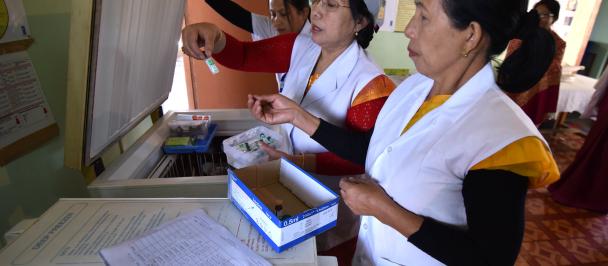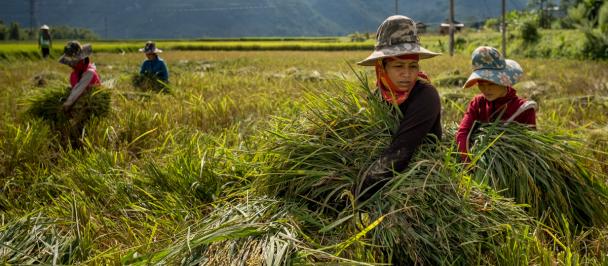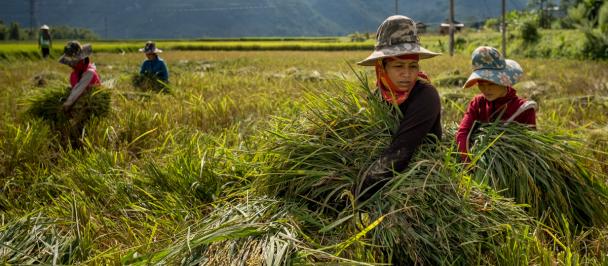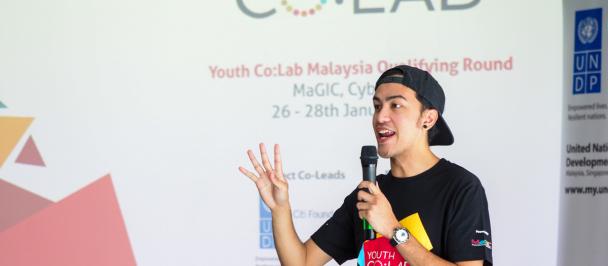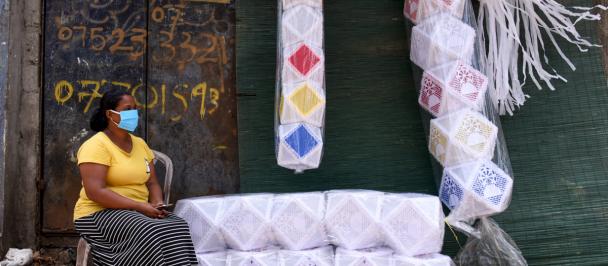I had just taken on my new job, as Regional Director for Asia and the Pacific at UNDP early in the year, when we heard rumblings about a new coronavirus wreaking havoc in Wuhan, China.
We didn’t know then that COVID-19 would inflict illness and death in most communities across the world and affect every economy, some much more than others. There is much that leadership guides and seminars do not, and often cannot, prepare you for and this pandemic has certainly been an irregular leadership induction for me. But it has also brought invaluable lessons for ‘leadership-in-the-rough’ that I thought might be useful to share as we strive to navigate this new reality together.
So much is about being present and hopeful in the moment. It is about being optimistic, while also being true to the facts. And this is not always easy, given what the science tells us and reality shows us. No one can escape from the grimness of the daily news. Sometimes we hear that the infection curve is flattening, in places. The next week that data is questioned. Every colleague and their family are watching the scenes of millions of people out of work, refugees and internally displaced at high risk, hospitals overflowing in one’s own neighbourhoods, and day labourers scavenging for food. And yet, as a leader, while addressing these realities, we must continue to speak about solutions and hope.
The message changes all the time. We don’t know what we don’t know. As new data comes in, what we know changes, sometimes dramatically. You probably have to say more often that you would like to – “I was wrong” or “there are new facts and I change my views”. IYes, the information is incomplete. The anxious adage of Silicon Valley “building the plane as we fly it,” has never been truer. Whether advocating a new policy option, trying out a digital delivery platform, or managing workplace crises, all of this must now be done virtually, sometimes in crowded family spaces, and sometimes having to rework things to get them right. We are all making decisions fast, often with incomplete information, and the digital space seems to amplify the sound of decision-making, while condensing time. Being aware of that helps … some.
We need to make tough decisions and work through tough choices faster. In every institution’s or country’s history, we remember leaders who took big decisions that stayed the course of time. Whether going to the moon, protecting public parks, or making education-for-all a reality, inspiring people and transforming ideas into action, and making choices that set a ‘new normal,’ is space handed to leaders in such times. We see some national leaders going for it, doubling healthcare budgets, pushing universal social protection, closing inefficient factories, introducing digital tech, decarbonizing economies and finding new ways of working. Not easy choices. But not taking big decisions can hurt more. The same is true for us, in our own smaller spaces. This is not the time to be reticent about change and what it may bring. Not everything will go back to what it was, and we won’t be doing all the same things that we were doing before. At the same time, not every member of a team is ready to embrace such change. Changes will have to be made and it will be hard. We must be fair and compassionate, but also honest about this.
We need to protect dignity, rights and values, and do so virtually. We’ve seen civil engagement and social change take off in virtual spaces. Leaders who are not digitally literate have adapted. Being adept at using technology is only a first step. Leading, motivating and empowering effectively through these spaces requires leadership at another level. For those who are more comfortable with face-to-face leadership drills, this is mind-altering. No induction took us down this path. One even looks different in these Zoom spaces! But remember, kindness comes through even in virtual spaces. It is important to ensure our colleagues have support. Sometimes this is dropping off a cooked meal or sharing childcare, and most importantly counselling for mental and emotional wellbeing.
We must not be plan-driven but purpose-driven. The best plans have been cut short. Project designs, team workplans and events that were designed early in the year seem less relevant. Even if one had the perfect plan, we must deliver in a new reality. And not everything can be repurposed, creatively re-directed or innovated with ease. Some individuals and teams can and will re-learn and adapt faster. Others batten down the hatches. But, at the end of the day, we should all be driven by a sense of purpose. Take that away and a team fails.
Everyone is having their own ups and downs. The pressure to deliver in times of great need, with the anxiety of loved ones being affected; the mixing of professional and personal spaces with work from home; even the thought of a return to office causes a mix of excitement and relief with anxiety and tension. All of this is real and normal. Some colleagues feel the mental and emotional strain more than others, and others a physical fatigue. While this experience is affecting colleagues differently, for each one it is very immediate and real. Taking breaks during the day, taking leave, listening to teammates also going through the same experiences, having support when needed, all helps. Our evolutionary coding wills us to get outside, we are meant to be mobile and to explore. And we will do so again. So, let us take care not to burn the candle at both ends while we wait.
The ‘leadership through crises’ books, inductions, and seminars will need to be re-written. It has been said often, but worth repeating, that getting through this will require a leadership that acts in the best interests of today and tomorrow. In a recent pre-COVID interview, when asked about the most compelling trait of leadership, I identified the best leaders as “people who speak to ideas that make things better for people who need us most, and then act on them”. Looking back, I still agree. However, that is being tested to the limit.
This blog was originally published here.

 Locations
Locations
